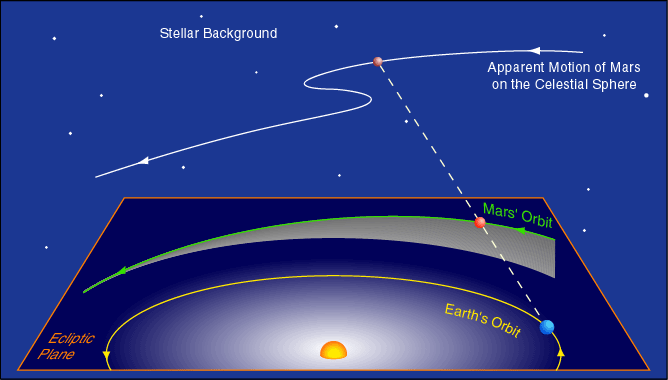The Aristotelian Universe Emerges
Aristotle's cosmological work On The Heavens is the most influential treatise of its kind in the history of
humanity.
It was accepted for more than 18 centuries from its inception (around 350 BCE) until the works of
Copernicus in the early 1500s. In this work Aristotle discussed the general nature of the cosmos and certain
properties of individual bodies.
The idea that all bodies, by their very nature, have a natural way of moving is central to Aristotelian
cosmology. Movement is not, he states, the result of the influence of one body on another  so, no Physics !
so, no Physics !
Movement is therefore endowed to bodies. Is this science?
Some bodies naturally move in straight lines, others naturally are
at rest ( but what does that mean? ). But there is yet another natural
movement: the circular motion.
By logic: since to each motion there must correspond a substance, there
ought to be some bodies that naturally move in circles.
Aristotle then proclaims that such things are the heavenly bodies as they
are made of a more exalted and perfect substance than all earthly objects.
Note the descriptors here: Exalted and Perfect
Since the stars and planets are made of this exalted substance and then move in circles, it is also natural,
according to Aristotle, for these objects to be spheres also. The cosmos is then made of a central earth (which
he accepted as spherical) surrounded by the moon, sun and stars all moving in circles around it. This
conglomerate he called ``the world''.
Aristotle's universe is
not infinite .
Aristotle also concluded the atomists were wrong, stating
that matter is in fact continuous and infinitely divisible.
The Aristotelian Business Card (The Finite Crystalline Sphere
Universe)

The initial motion of these spheres was caused by the action of a
prime mover which acts on the outermost sphere of the fixed stars;
somehow, however, this action is communicated to the other
spheres and they move as well, but at different rates, since that is
what the observations demand.
Aristotle also asserts that the world did not come into being at one point,
but that it has existed, unchanged, for all eternity (it had to be that way since it was perfect .
Still, since he believed that the sphere was the most perfect of the geometrical
shapes, the universe did have a center (the Earth) and its material part had an edge, which was ``gradual'' starting in the lunar and ending in the fixed
star sphere.
Beyond the sphere of the stars the universe
continued into the spiritual realm where material things cannot be.

 This is in direct conflict with the Biblical description of creation, and an enormous amount of effort was spent by the medieval
philosophers in trying to reconcile these views (and, for which, of course,
no reconciliation is possible).
This is in direct conflict with the Biblical description of creation, and an enormous amount of effort was spent by the medieval
philosophers in trying to reconcile these views (and, for which, of course,
no reconciliation is possible).
Retrograde motion of Mars vs Aristotelian Universe
The crystalline sphere universe of Aristotle makes a simple prediction
 all the wheels move in the same direction.
all the wheels move in the same direction.
This means that any planet should always move in the same direction,
with respect to the background stars (which are the coordinate system
here).
Yet, the retrograde motion of Mars was well known at the time and completely
violated this principle.

Mars generally moves west to east (right to left) on the background of stars. But every 780 days it goes
through period of 83 days during which it moves east to west against the stars, the retrograde motion.
The
retrograde period is centered around the time when Mars is in opposition - Mars is directly opposite the Sun. Thus, this phenomena could be established
as repeatable and reliable after only a decade's worth of observations.

Aristarchus and a Sun-Centered Universe
Plato gave his students a major problem to work on.
Their task was to find a geometric explanation for the
apparent motion of the planets, especially the strange retrograde motion.
One key observations is that near and during the time of retrograde motion,
Mars appears significantly brighter in the sky than at other times  What might this mean?
What might this mean?
Plato and his
students were, of course, also guided by the Pythagorean Paradigm. This meant that regardless of the
scheme they came up with, the Earth should be at the unmoving center of the planet motions.
One student
named Aristarchus violated that rule and developed a model with the Sun at the center. His model was not
accepted because of the obvious observations against a moving Earth. These
were all intuitive arguments based on the observation that a) one didn't feel any motion, b) the clouds in the sky didn't seem to be flying off and c) why would the center of the Universe be moving?
 so, no Physics !
so, no Physics !



